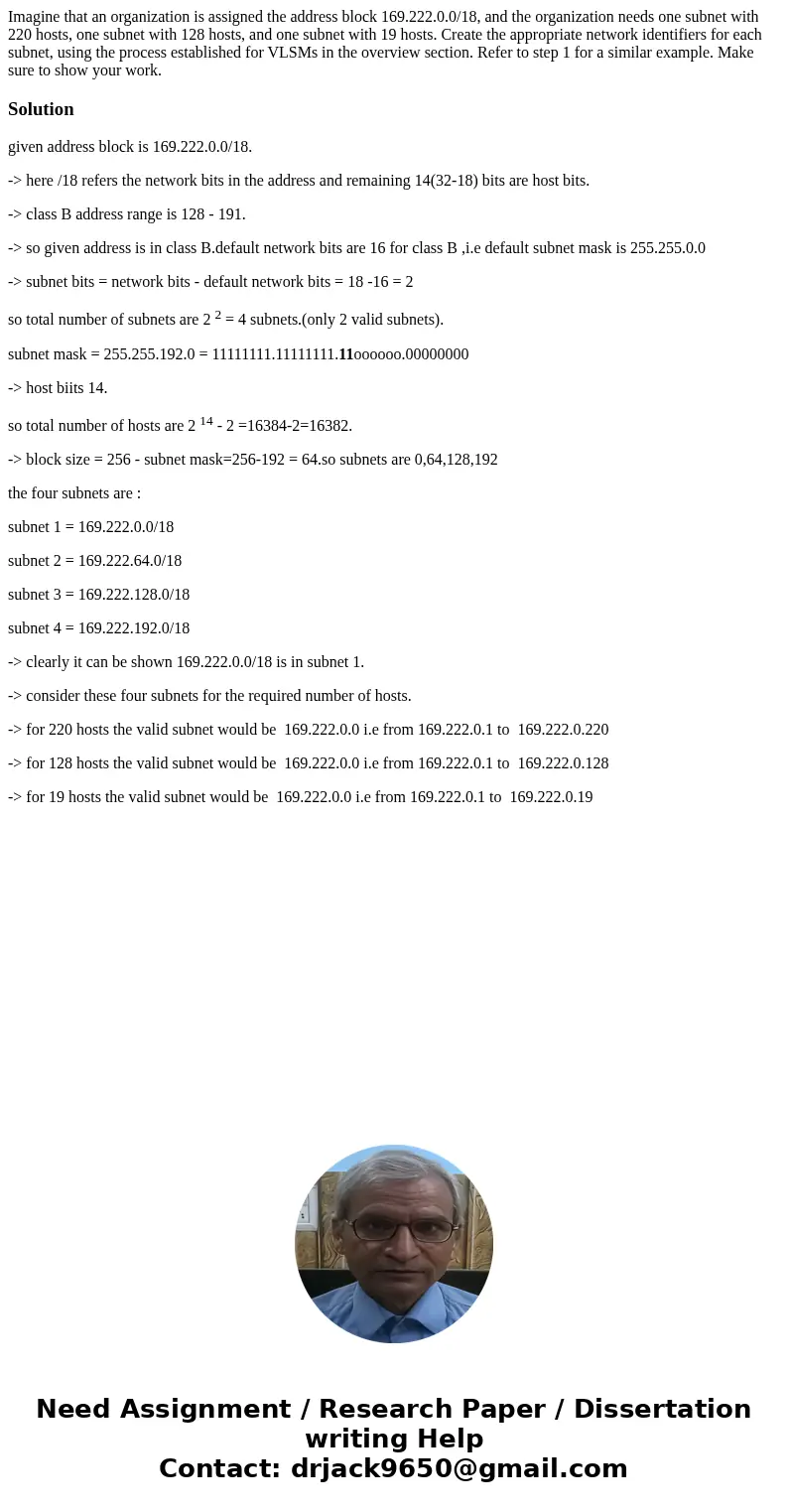Imagine that an organization is assigned the address block 1
Solution
given address block is 169.222.0.0/18.
-> here /18 refers the network bits in the address and remaining 14(32-18) bits are host bits.
-> class B address range is 128 - 191.
-> so given address is in class B.default network bits are 16 for class B ,i.e default subnet mask is 255.255.0.0
-> subnet bits = network bits - default network bits = 18 -16 = 2
so total number of subnets are 2 2 = 4 subnets.(only 2 valid subnets).
subnet mask = 255.255.192.0 = 11111111.11111111.11oooooo.00000000
-> host biits 14.
so total number of hosts are 2 14 - 2 =16384-2=16382.
-> block size = 256 - subnet mask=256-192 = 64.so subnets are 0,64,128,192
the four subnets are :
subnet 1 = 169.222.0.0/18
subnet 2 = 169.222.64.0/18
subnet 3 = 169.222.128.0/18
subnet 4 = 169.222.192.0/18
-> clearly it can be shown 169.222.0.0/18 is in subnet 1.
-> consider these four subnets for the required number of hosts.
-> for 220 hosts the valid subnet would be 169.222.0.0 i.e from 169.222.0.1 to 169.222.0.220
-> for 128 hosts the valid subnet would be 169.222.0.0 i.e from 169.222.0.1 to 169.222.0.128
-> for 19 hosts the valid subnet would be 169.222.0.0 i.e from 169.222.0.1 to 169.222.0.19

 Homework Sourse
Homework Sourse